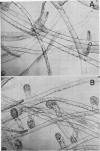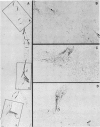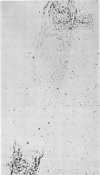Abstract
Application of cytokinins to moss protonemata of the proper physiological age causes bud formation on specific cells (caulonema). During the early stages of their development, buds revert to protonemal filaments if the cytokinin has been removed by washing the protonemata. This indicates that the hormone is not acting as a “trigger” but has to be present during a critical period of time until differentiation is stabilized. Autoradiographs of protonemata treated with a labeled cytokinin, benzyladenine-benzyl-7-14C, show a striking accumulation of the radioactivity in caulonema cells which are in the stage of bud formation, and in the buds themselves. Cells which did not react to the hormone contained very little radioactivity. The accumulation of benzyladenine in the “target cells” may be due to the presence of binding sites which, in turn, may distinguish responding cells from non-responding ones.
Full text
PDF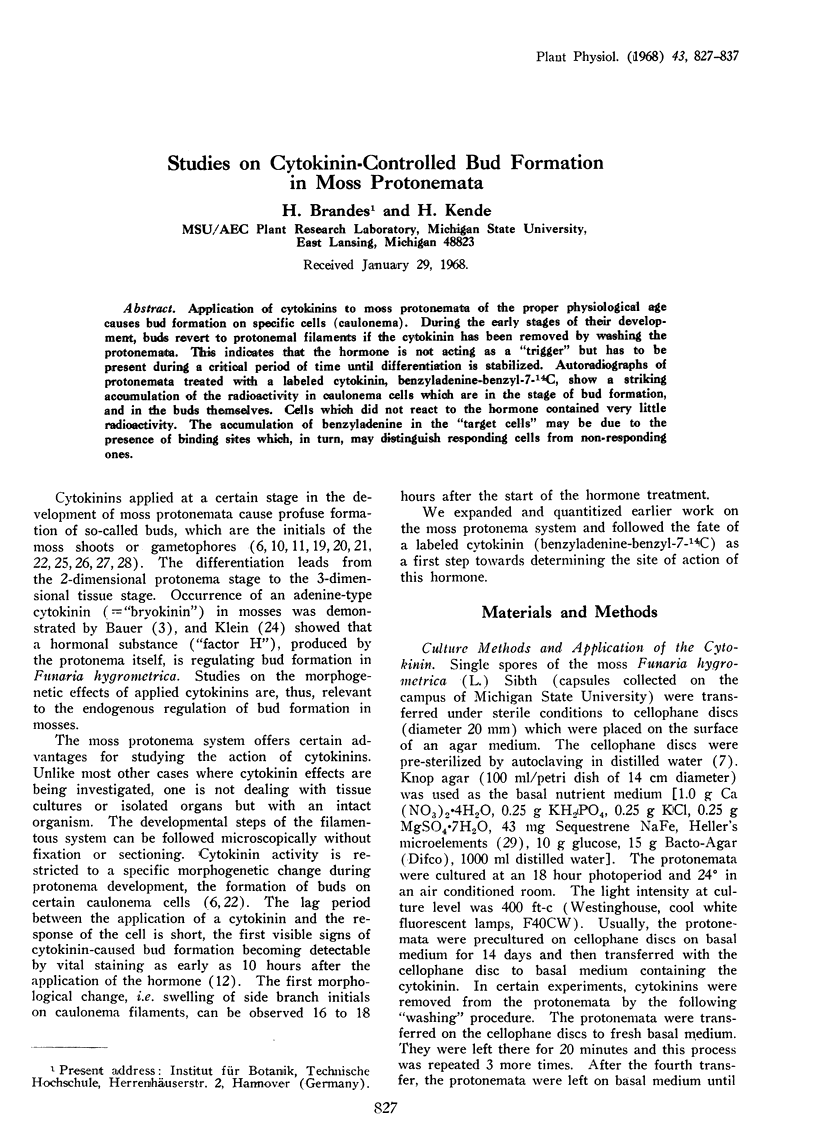
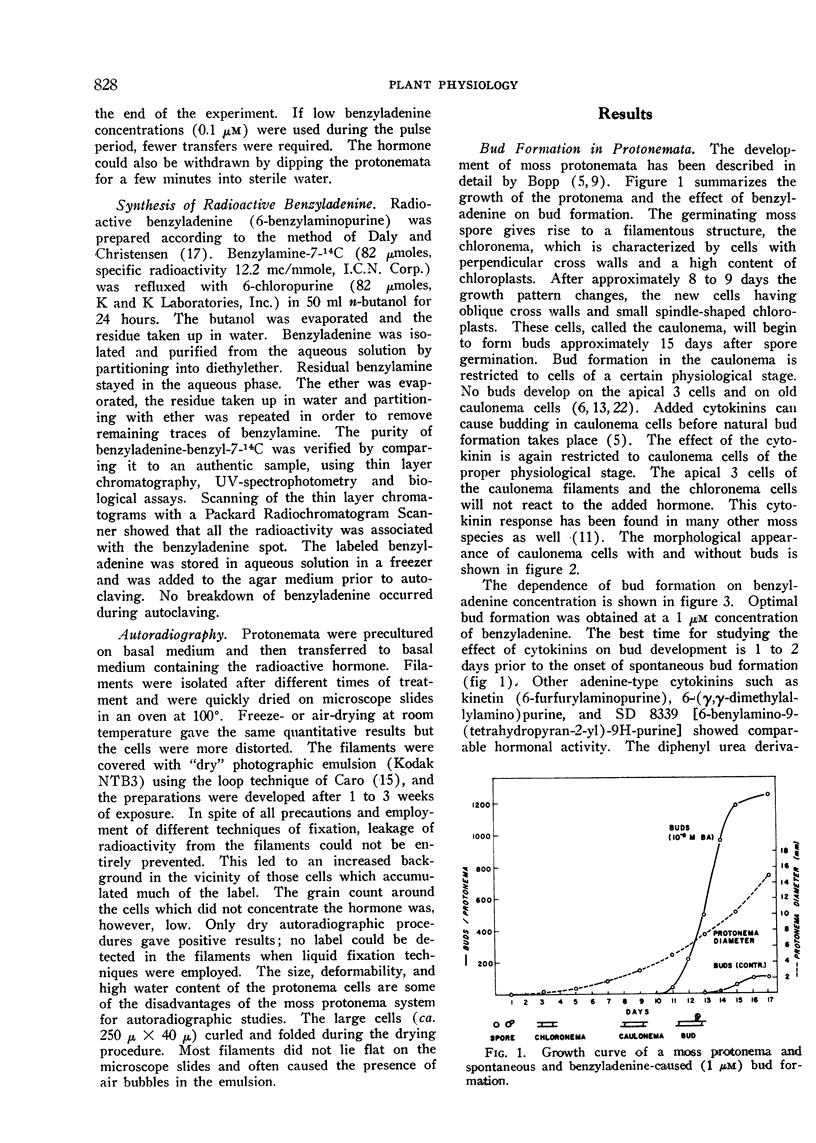
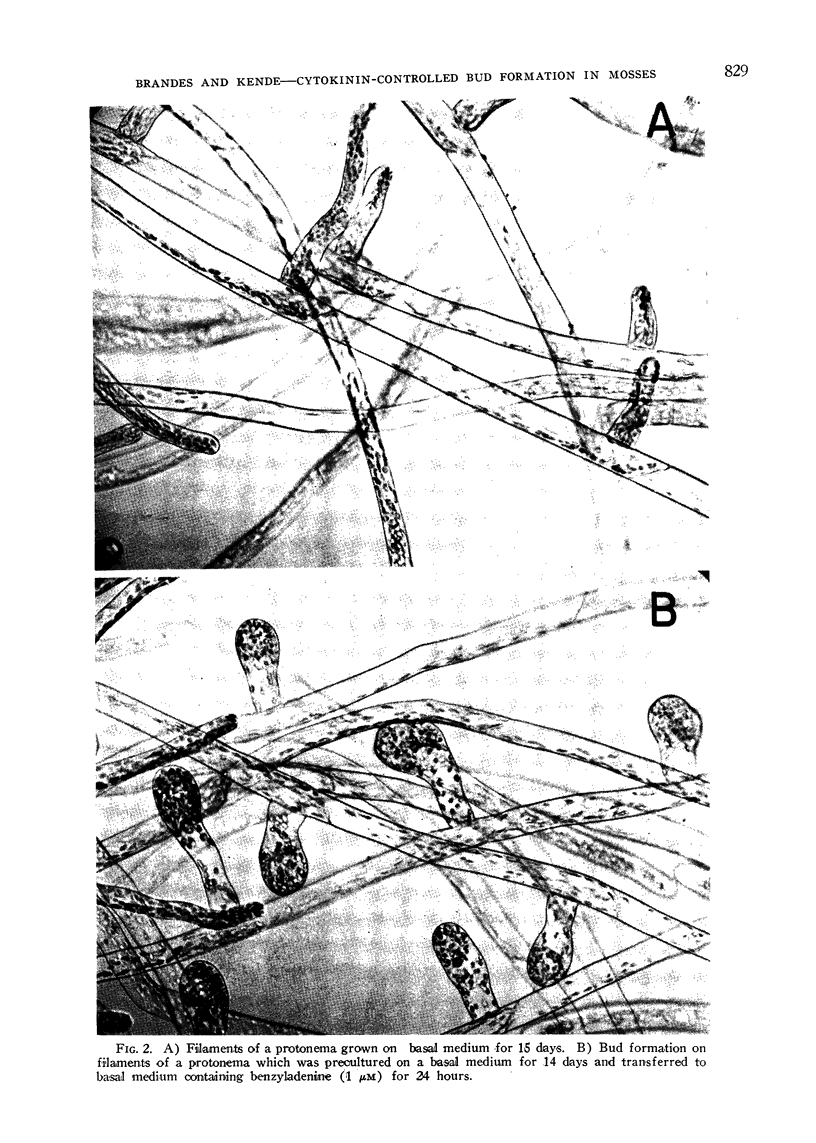
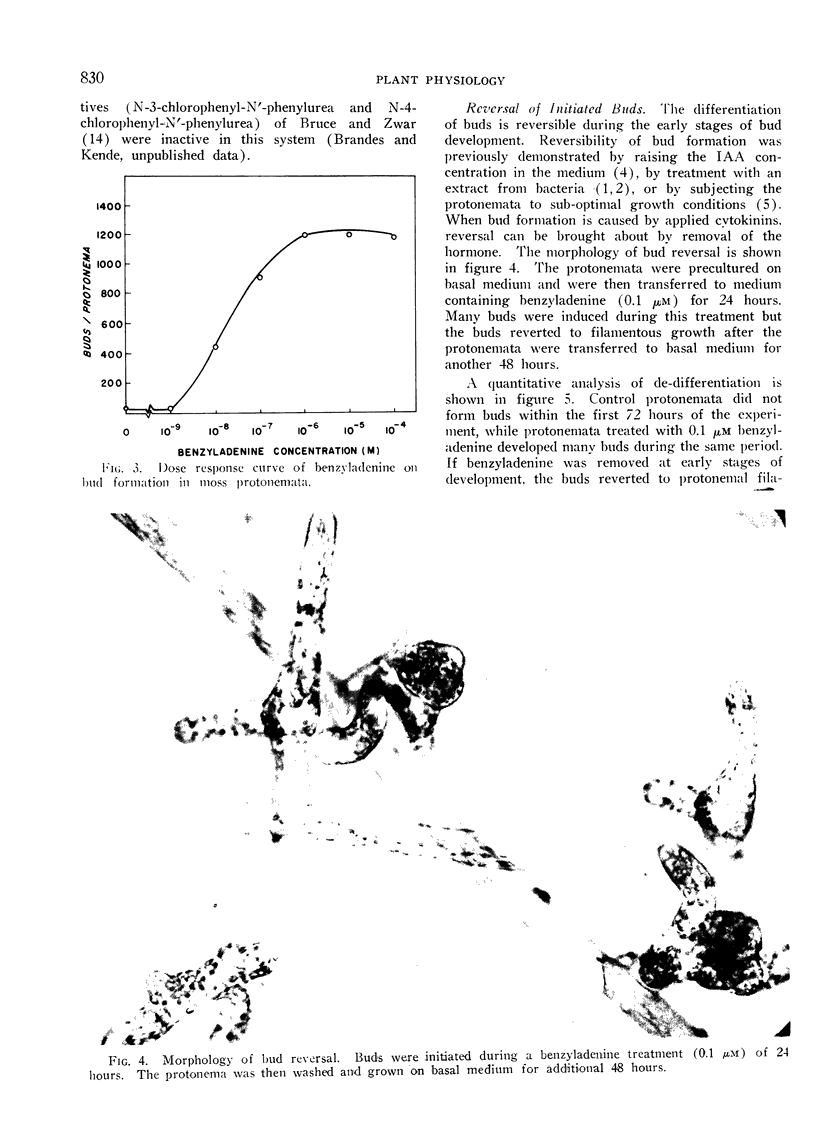
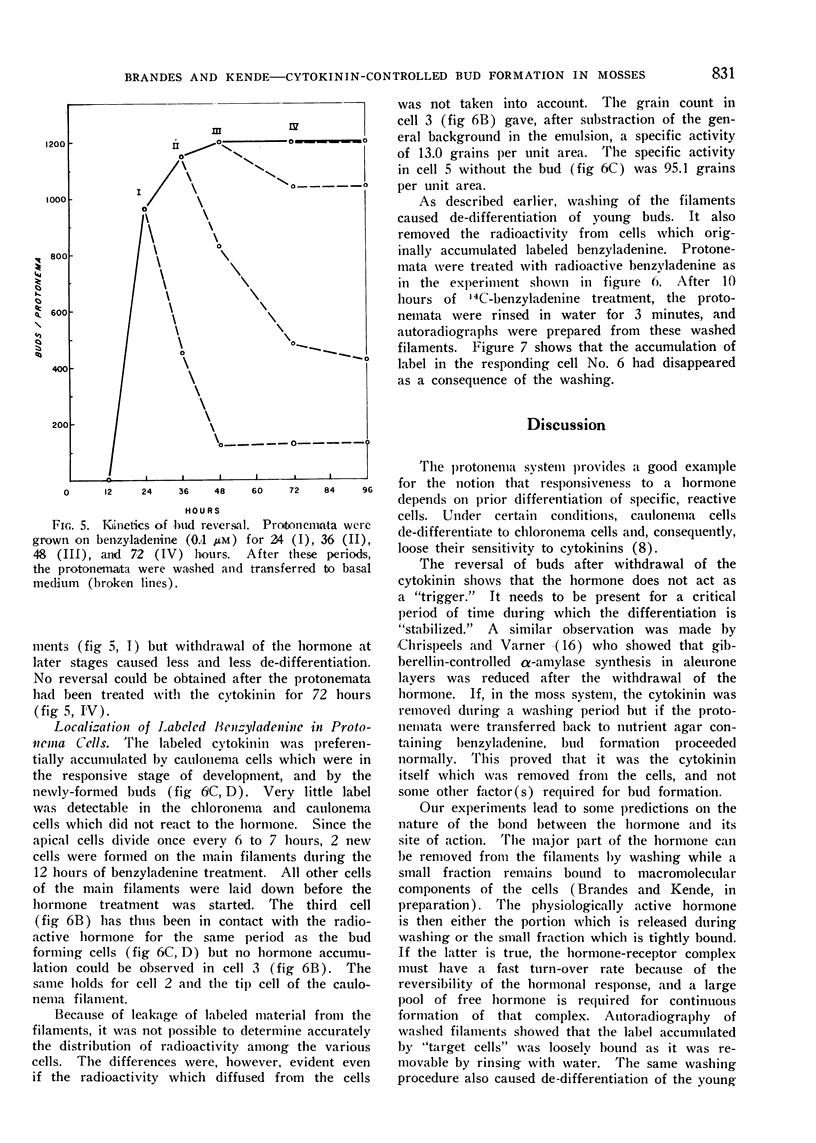
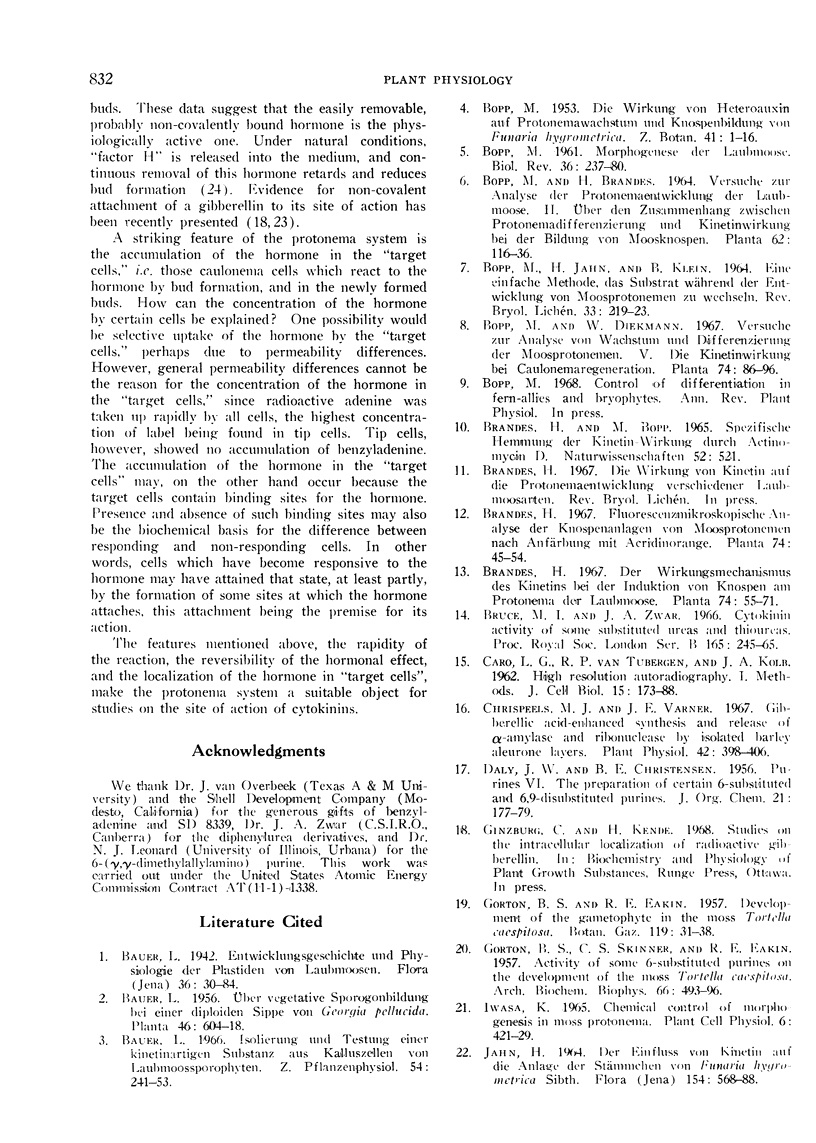
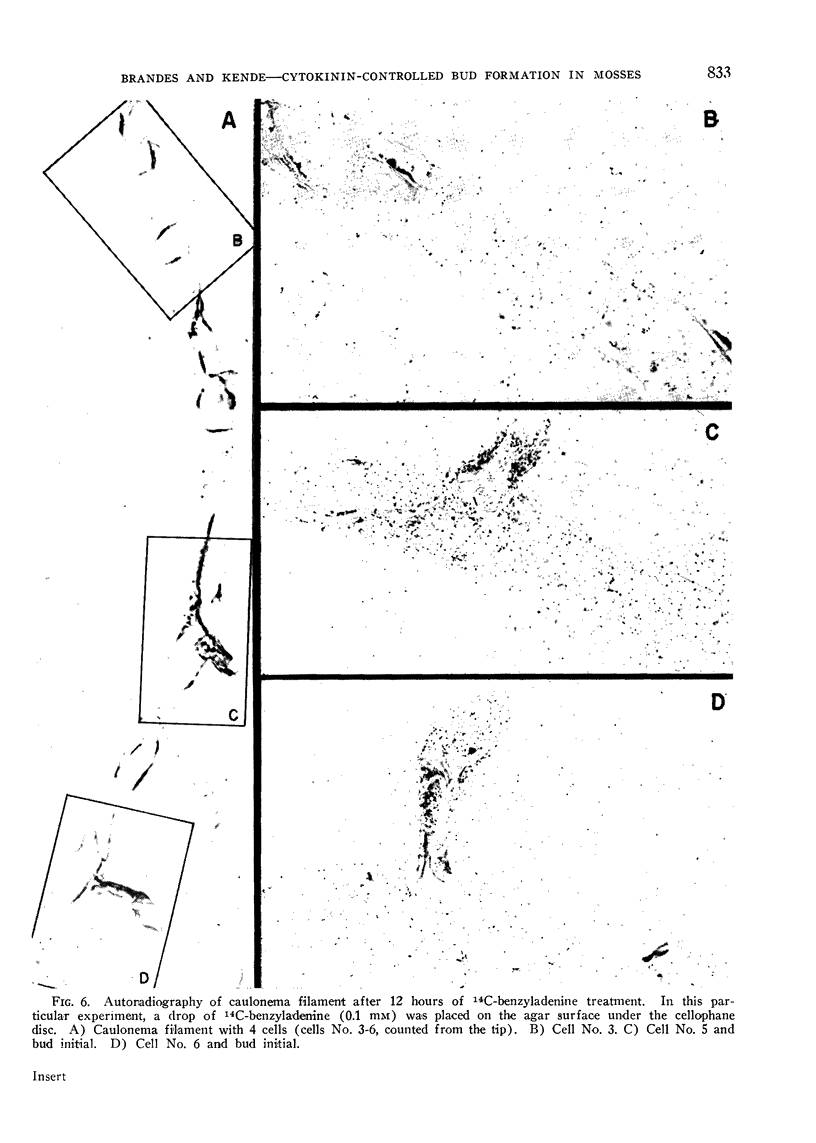
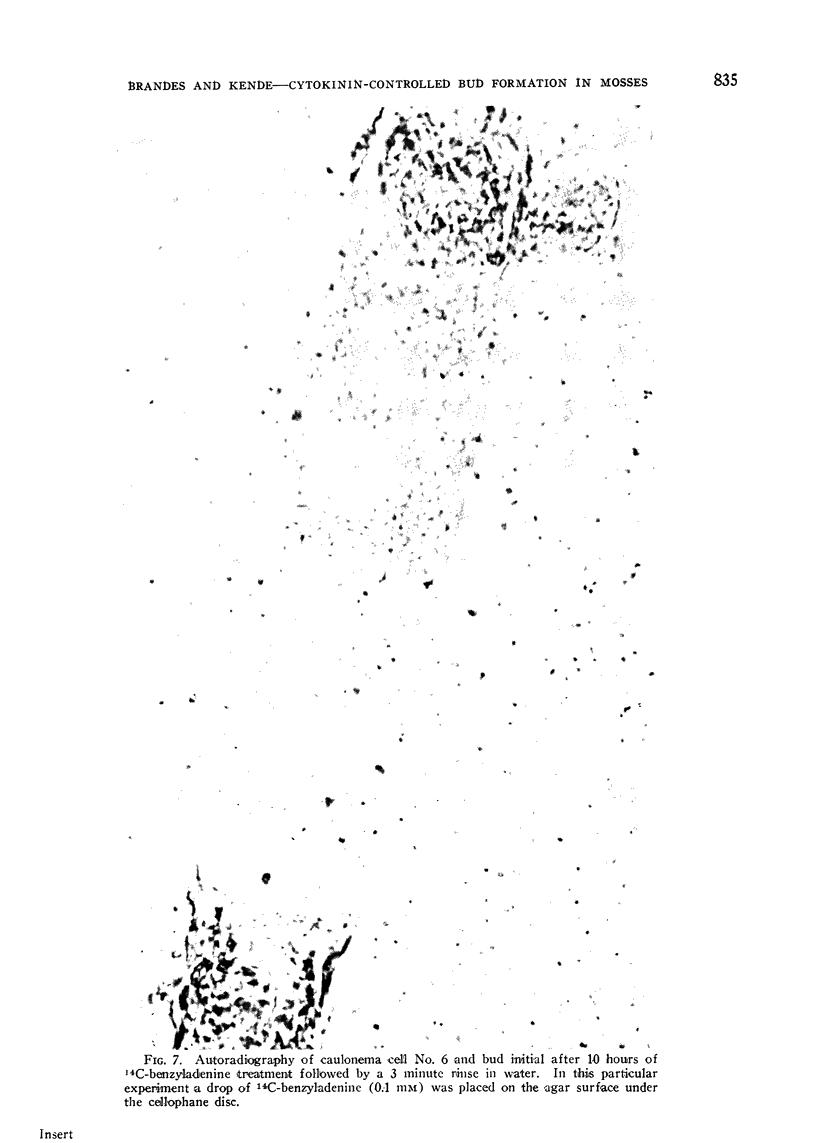

Images in this article
Selected References
These references are in PubMed. This may not be the complete list of references from this article.
- BALDWIN W. F., SALTHOUSE T. N. Oxygen deficiency and radiation damage in the insect Rhodnius. Nature. 1959 Apr 4;183(4666):974–974. doi: 10.1038/183974a0. [DOI] [PubMed] [Google Scholar]
- Kende H. Preparation of radioactive gibberellin a(1) and its metabolism in dwarf peas. Plant Physiol. 1967 Nov;42(11):1612–1618. doi: 10.1104/pp.42.11.1612. [DOI] [PMC free article] [PubMed] [Google Scholar]



